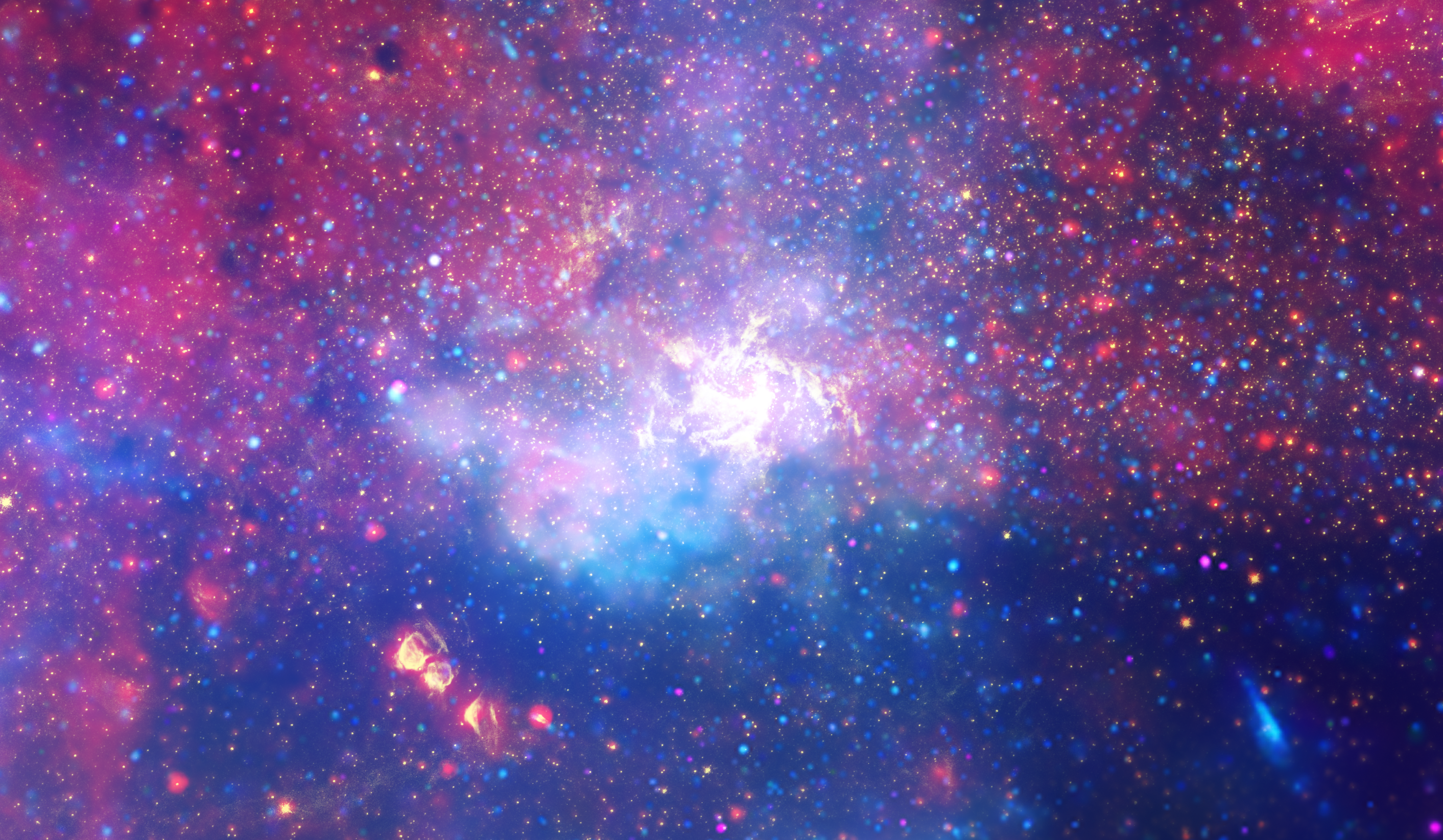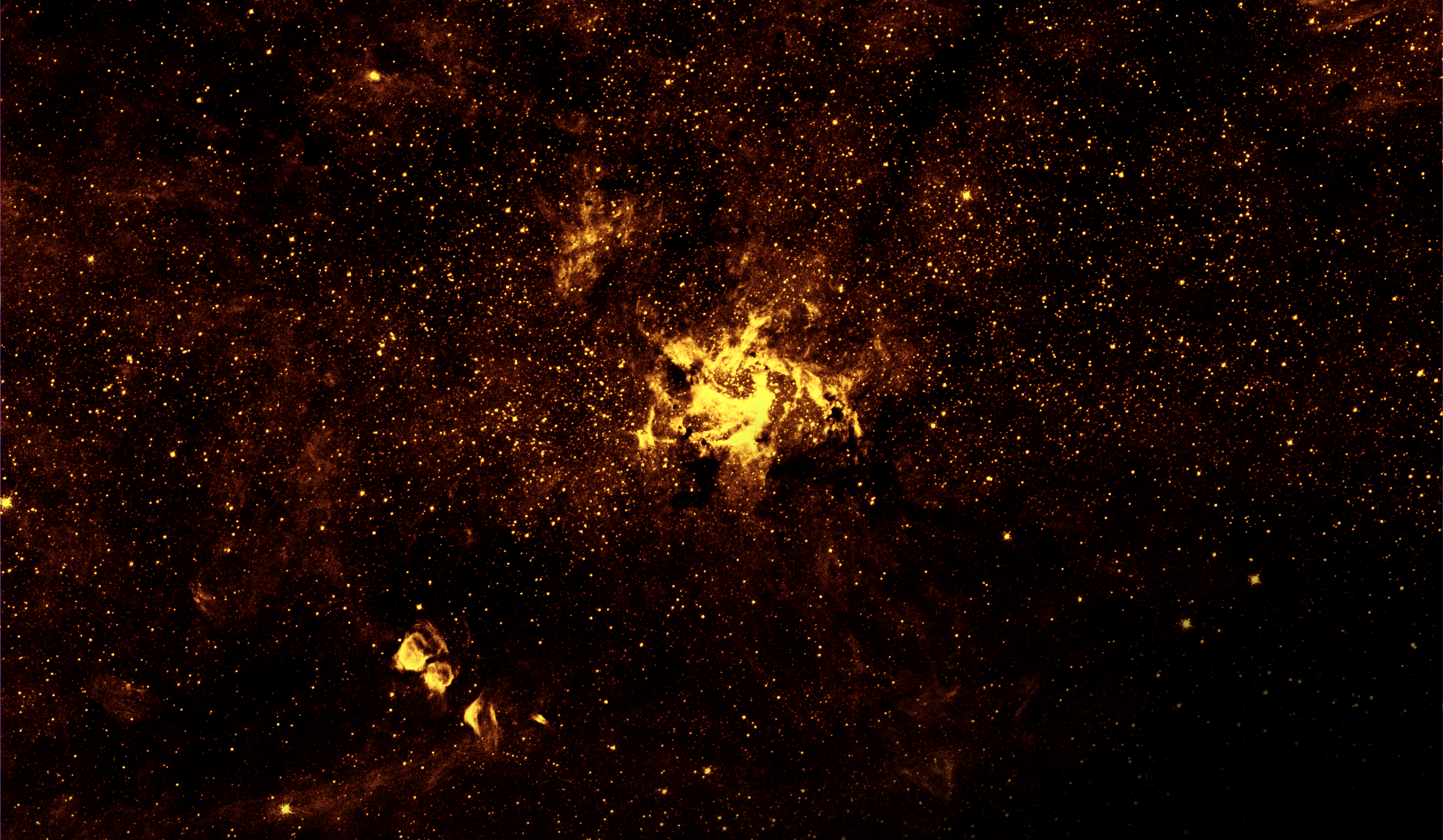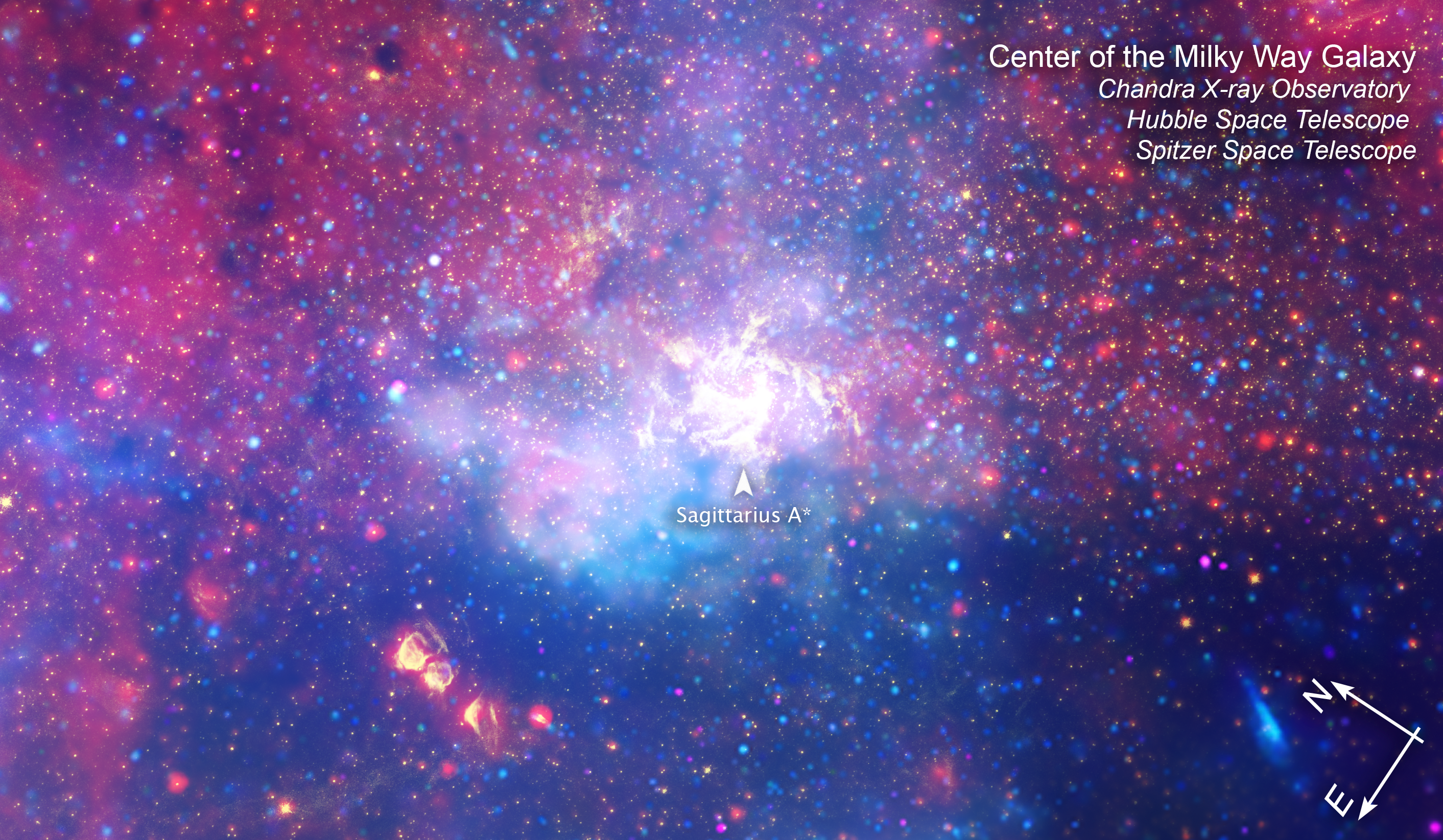1 min read
Galactic Center (Chandra, Hubble, Spitzer)

An enormous swirling vortex of hot gas glows with infrared light, marking the approximate location of the supermassive black hole at the heart of our Milky Way galaxy. This multiwavelength composite image includes near-infrared light captured by NASA’s Hubble Space Telescope, and was the sharpest infrared image ever made of the galactic center region when it was released in 2009. Dynamic flickering flares in the region immediately surrounding the black hole, named Sagittarius A*, have complicated the efforts of the Event Horizon Telescope (EHT) collaboration to create a closer, more detailed image. While the black hole itself does not emit light and so cannot be detected by a telescope, the EHT team is working to capture it by getting a clear image of the hot glowing gas and dust directly surrounding it.
NASA’s upcoming James Webb Space Telescope, scheduled to launch in December 2021, will combine Hubble’s resolution with even more infrared light detection. In its first year of science operations, Webb will join with EHT in observing Sagittarius A*, lending its infrared data for comparison to EHT’s radio data, making it easier to determine when bright flares are present, producing a sharper overall image of the region.
In the composite image shown here, colors represent different wavelengths of light. Hubble’s near-infrared observations are shown in yellow, revealing hundreds of thousands of stars, stellar nurseries, and heated gas. The deeper infrared observations of NASA’s Spitzer Space Telescope are shown in red, revealing even more stars and gas clouds. Light detected by NASA’s Chandra X-ray Observatory is shown in blue and violet, indicating where gas is heated to millions of degrees by stellar explosions and by outflows from the supermassive black hole.
About the Object
- R.A. PositionR.A. PositionRight ascension – analogous to longitude – is one component of an object's position.17h 45m 36.0s
- Dec. PositionDec. PositionDeclination – analogous to latitude – is one component of an object's position.-28° 55' 58.8"
- ConstellationConstellationOne of 88 recognized regions of the celestial sphere in which the object appears.Sagittarius
- DistanceDistanceThe physical distance from Earth to the astronomical object. Distances within our solar system are usually measured in Astronomical Units (AU). Distances between stars are usually measured in light-years. Interstellar distances can also be measured in parsecs.26,000 light-years (8 kiloparsecs)
About the Data
- Data DescriptionData DescriptionProposal: A description of the observations, their scientific justification, and the links to the data available in the science archive.
Science Team: The astronomers who planned the observations and analyzed the data. "PI" refers to the Principal Investigator.Spitzer Data: The Spitzer Space Telescope data were courtesy of NASA, Jet Propulsion Laboratory, and S. Stolovy (Spitzer Science Center/California Institute of Technology). Hubble Data: The Hubble component was from the HST proposal 11120 : Q.D. Wang (University of Massachusetts, Amherst), S. Stolovy (Caltech), C. Lang (University of Iowa), A. Cotera (SETI Institute), M. Muno (Caltech), M. Morris (University of California, Los Angeles), D. Calzetti (University of Massachusetts, Amherst), S. Ramirez (Caltech), and G. Schneider (University of Arizona). Chandra Data: The science team was led by Q.D. Wang (University of Massachusetts, Amherst). Image courtesy of NASA/CXC/UMass/Q.D. Wang et al.
- InstrumentInstrumentThe science instrument used to produce the data.SST>IRAC, HST>NICMOS, and CXO>ACIS
- Exposure DatesExposure DatesThe date(s) that the telescope made its observations and the total exposure time.September 3, 2004, and September 15, 2005 (SST), February 22 - June 5, 2008 (HST), and March 2000 - July 2007 (CXO)
- FiltersFiltersThe camera filters that were used in the science observations.SST: 3.6 microns, 4.5 microns, 5.8 microns, and 8.0 microns HST: F187N (Paschen-Alpha) and F190N (Paschen-Alpha continuum) CXO: 1-3 keV, 3-5 keV, 5-8 keV
- Object NameObject NameA name or catalog number that astronomers use to identify an astronomical object.Sagittarius A*
- Object DescriptionObject DescriptionThe type of astronomical object.Center of the Milky Way Galaxy
- Release DateOctober 27, 2021
- Science ReleaseNASA’s Webb Will Join Forces with the Event Horizon Telescope to Reveal the Milky Way’s Supermassive Black Hole
- CreditNASA, ESA, SSC, CXC, STScI

Related Images & Videos

Galactic Center in Near-infrared (Hubble)
Heated gas swirls around the region of the Milky Way galaxy’s supermassive black hole, illuminated in near-infrared light captured by NASA’s Hubble Space Telescope. Released in 2009 to celebrate the International Year of Astronomy, this was the sharpest infrared image ever made...

Galactic Center (Chandra, Hubble, Spitzer Compass Image)
This composite image of the center of our Milky Way galaxy was captured by the Chandra X-ray Observatory’s Advanced CCD Imaging Spectrometer, the Hubble Space Telescope’s Near Infrared Camera and Multi-Object Spectrometer, and the Spitzer Space Telescope’s Infrared Array Camera....
Share
Details
Laura Betz
NASA’s Goddard Space Flight Center
Greenbelt, Maryland
laura.e.betz@nasa.gov
NASA, ESA, SSC, CXC, STScI






























